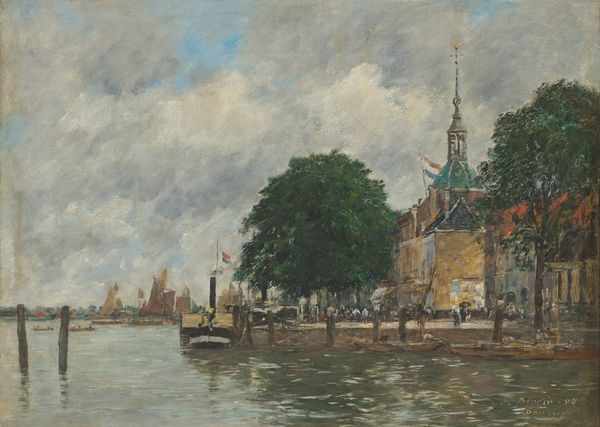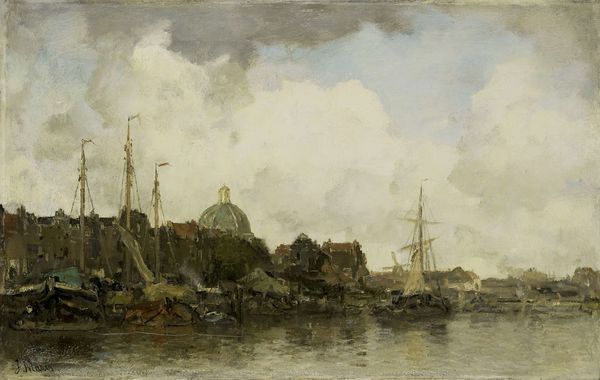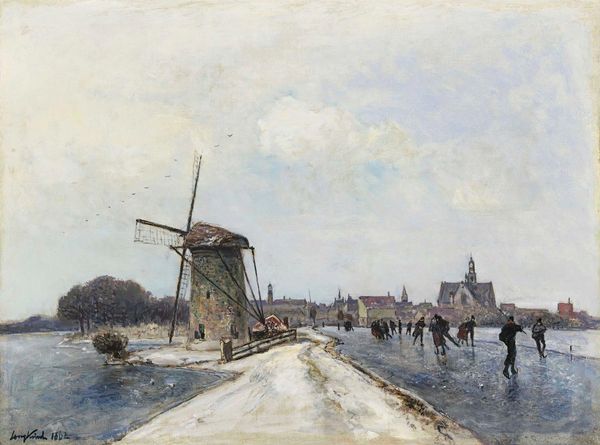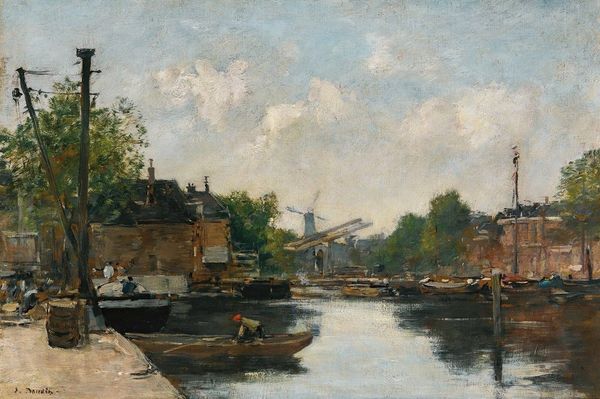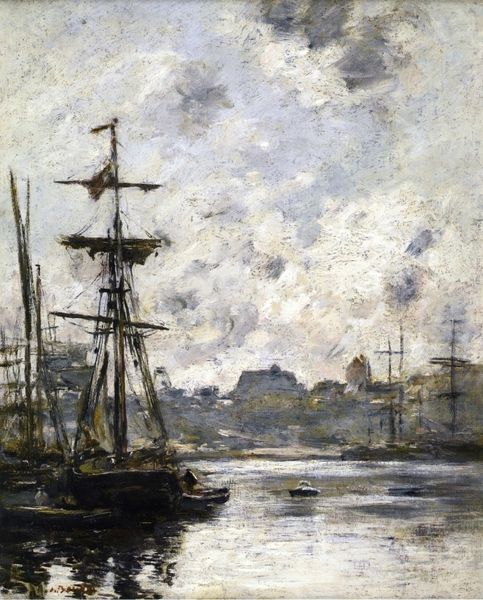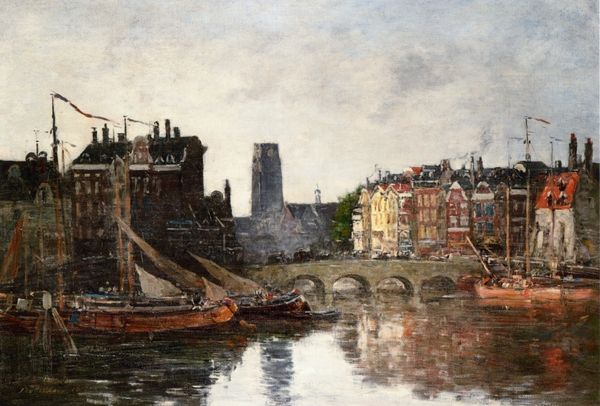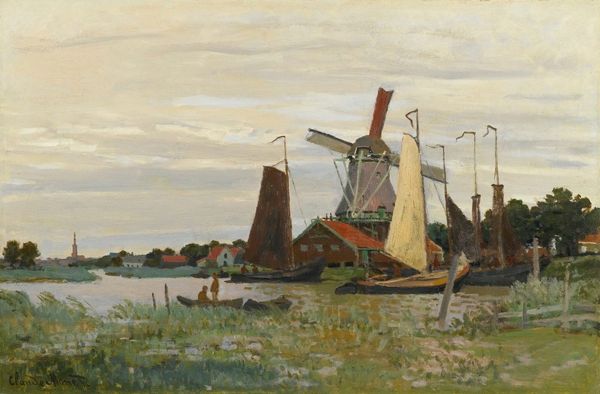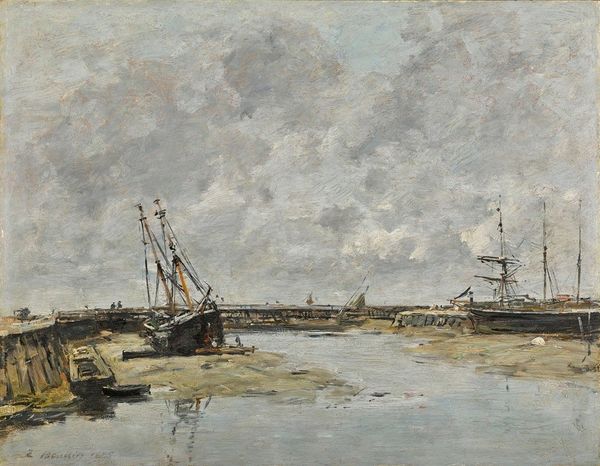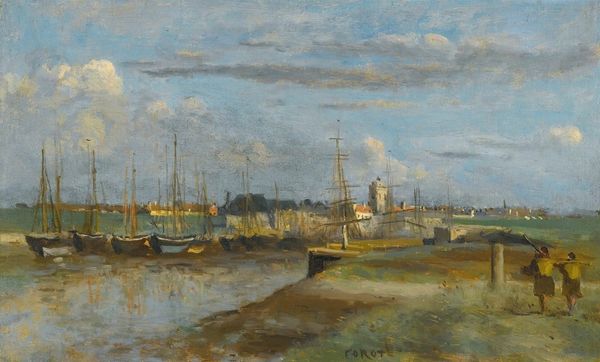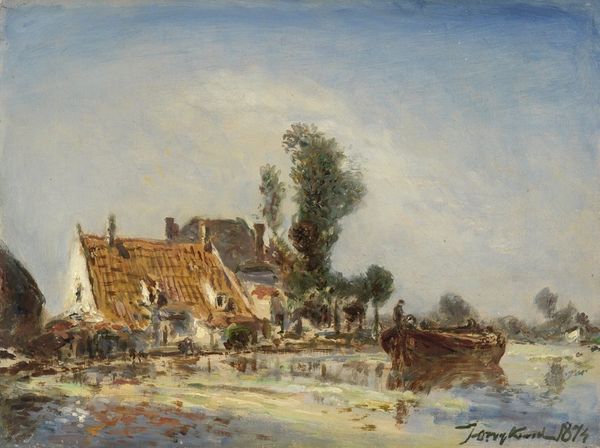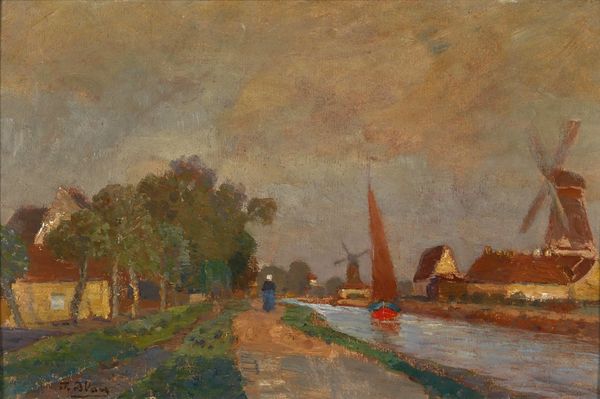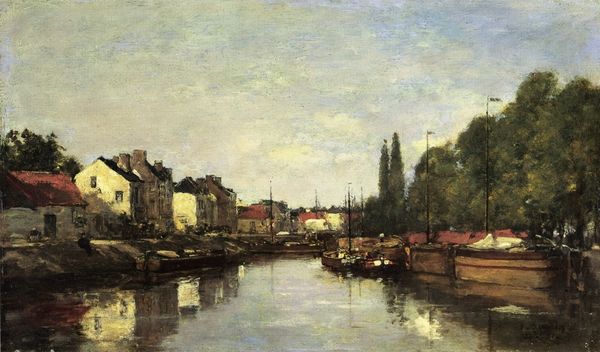
Copyright: Public Domain: Artvee
Curator: This is Johan Barthold Jongkind’s, "The Church of Overschie," painted in 1866. Jongkind was an important precursor to the Impressionists. He often worked en plein air, directly observing and capturing fleeting atmospheric effects. Editor: My first thought? It’s beautifully muted. That grey-blue light seems to absorb all sound, creating an odd serenity. And the way the church just rises out of the town—imposing, yet somehow integrated. Curator: The painting demonstrates the development of landscape painting at that time, showing us a small village, defined both by the church's presence, but equally by the industry reflected in the river's traffic. Oil paint becomes almost like watercolor in his hands, such is the looseness, freedom of its application. We are looking at the social construction of the rural and its gradual modernization. Editor: Absolutely. But to me, it's almost melancholic. The overcast sky, the way the colors blend…it evokes a sense of quiet resignation. Even that boat seems weighed down by the atmosphere. Perhaps Jongkind felt that tug of the past, this transition in how rural life and labor was structured. The painting feels strangely modern and distant. Curator: His technique certainly facilitated that atmosphere. Jongkind was extremely interested in the industrialization of paint production. His free style can also be attributed to that transformation that freed artists from some of the restrictions of their practices. Jongkind himself became an influence on younger artists like Monet, actively choosing and shaping their production habits and routines. Editor: I see it—that influence— but I think I feel more a kinship with later artists such as Edward Hopper here. That same restrained palette, that same focus on how humans occupy spaces... It's remarkable to consider Jongkind working outside, responding to these transformations. The very act of painting outside, capturing the effects of light in real-time... he must have felt a certain freedom in that. Curator: Precisely, this direct engagement, combined with advancements in readily available painting materials allowed artists a new type of visual expression that altered labor dynamics and opened possibilities we see even today. Editor: It makes me want to pick up a brush. Just be out there, under that sky, translating it all, and wrestling with its complexities in color and tone. It has that quality, of quiet but potent influence.
Comments
No comments
Be the first to comment and join the conversation on the ultimate creative platform.
